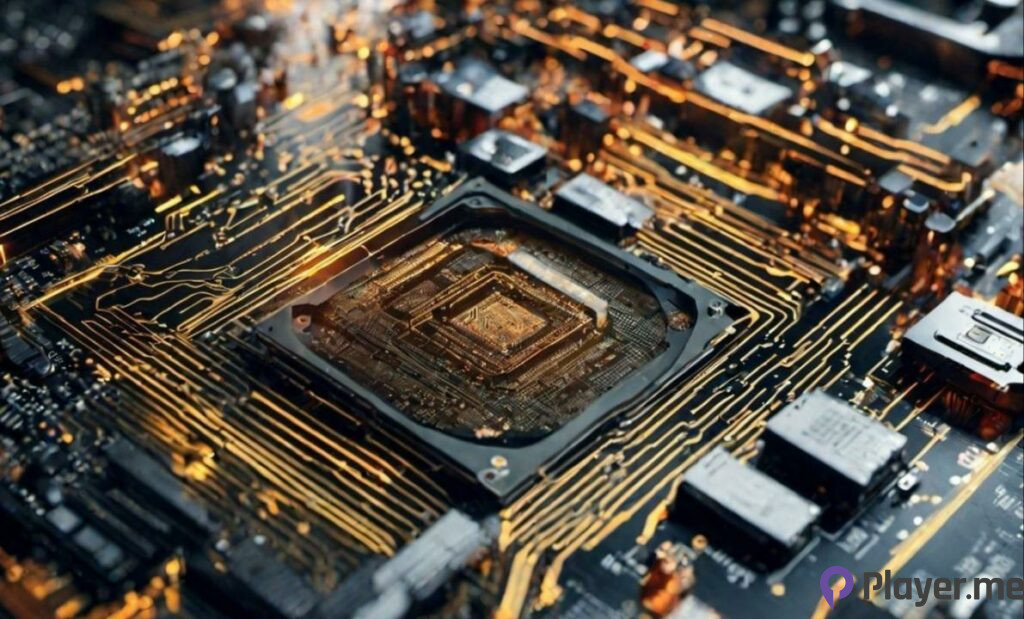If you know about Artificial Intelligence (AI), there’s a good chance you’ve heard of Machine Learning (ML). ML is not as popular as AI in the media, but it is an essential technology with real-world implications. It enables computer systems to learn data from various sources without explicit programming.
ML algorithms utilise statistical techniques to ascertain patterns in data and make decisions or predictions based on these patterns. This process is as simple as machines learning from data and operating with what they’ve learnt. ML is how your search engine suggests things of interest to you and how your smart home devices better understand your commands.
However, not many people understand how ML algorithms work. You’ve come to the right place if you are in that boat. This article will break down the basics of ML to help you learn how its algorithms work.
Overview of Machine Learning
If you believe that ML is a futuristic technology that deals with machines becoming more intelligent than humans and ultimately taking over the world, it’s time to discard that knowledge. This knowledge is not rooted in reality. It’s straight from science fiction.
ML has been around for decades, and some of the earliest research dates back to the 1950s. It is a branch of AI that uses algorithms to make decisions or predictions after a period of training and learning from data. Just think of it as teaching your dog tricks and the animal exhibiting the behaviour over time.
ML involves making computers learn lots of experiences and doing things later on that are based on that knowledge without being directly told how to do it.
Also Read: NVIDIA Unveils Cutting-Edge AI Chip Configuration for Enhanced Performance

How Do Machine Learning Algorithms Work?
ML algorithms train computer systems to study data and use the knowledge to predict or act in real-world applications. Here are the basic steps in ML:
- Data Collection: The first step in ML is collecting large and diverse data representing the problem being solved. Data sources include the Internet, databases, and surveys, among others.
- Data Preparation: Collected data must be preprocessed and cleaned up to eliminate noisy or irrelevant information. It must then be transformed into a format the ML algorithm can use.
- Model Selection: After data preparation, the next task is to select an appropriate ML model for training. There are many ML models to choose from, and they all have their strengths and weaknesses. The choice of model usually depends on the problem and the nature of the data.
- Model Training: This stage is where the ML algorithm is trained on the prepared and processed data. The algorithm studies the data, learns from it, and adjusts its parameters to enhance performance.
- Testing and Evaluation of the Model: After the training of the ML algorithm, it is tested on an unfamiliar dataset to evaluate its performance and make it make accurate predictions.
- Deployment: Once the ML algorithm has been trained and evaluated for performance, it is ready for deployment to predict and act in real-world applications.
Also Read: 5 Best Benefits of AI Mini Drone in Life-Saving Scenarios

Real-World Applications of Machine Learning
We encounter various applications of ML every day without realising it. Here are some real-world applications of ML across different domains and industries:
- Virtual Assistants: Virtual assistants such as Siri, Alexa, Google Assistant, Bixby, and others use ML algorithms to recognise and answer voice commands. Their learning helps them personalise their responses using past interactions.
- Search Engines: Search engines such as Google and Bing use ML algorithms to learn users’ interests and make suggestions based on that knowledge. For example, when you open the Google app, you’ll find suggestions similar to your past searches. That is ML in action.
- Social Media Feeds: Have you seen labels on your social media posts suggesting that you might like the content? That’s ML at work. Social media platforms use ML algorithms to organise users’ feeds, showing them content they may find interesting due to past behaviour. Streaming networks like Netflix, YouTube, and Amazon Prime Video use similar algorithms to suggest content to users.
- Spam Filters: ML algorithms help your Email app filter out potential spam emails using patterns and keywords.
- Online Shopping Recommendations: Online retailers use ML algorithms to recommend products and services to customers based on their previous purchases and browsing pattern.
- Medical Diagnosis: ML models can assist medical practitioners to diagnose and predict patient outcomes based on patient medical records and their data.
Related: Unleashing the AI-Robot Revolution 2023: Empowered Capabilities, Autonomy, and Beyond
Conclusion
ML algorithms are not as complex as many people think. They have straightforward working principles that are easy to understand. The algorithms are products of several actions, including data collection, preparation, model selection, training, and evaluation. They are deployed for real-world applications once they’ve completed the entire process.
ML real-world applications are part of our lives, making things easier without us knowing the source of the ease. The algorithms will only get better at solving everyday problems.
Frequently Asked Questions
What’s the Difference Between AI and ML?
AI is a general term that encompasses the development of machines that can simulate human behaviour. ML, on the other hand, is only a subset of AI that focuses on developing statistical models that help machines to learn and act using their experience.
Does ML Have Limitations?
ML has limitations that affect its productivity. These limitations include data availability and quality, interpretability, lack of human intuition, overfitting, underfitting, ethics and fairness, and computational resources.
What’s the Difference Between ML and Traditional Programming?
Traditional programming involves writing instructions and rules to solve problems, while ML builds models that can automatically learn from large datasets and improve from the data. Instead of working with explicit instructions, ML algorithms analyse data patterns and optimise their parameters to make accurate decisions or predictions.





